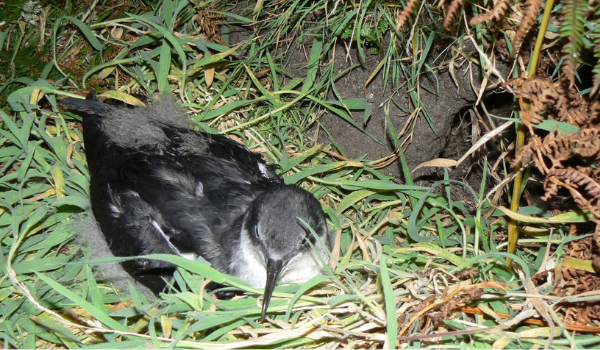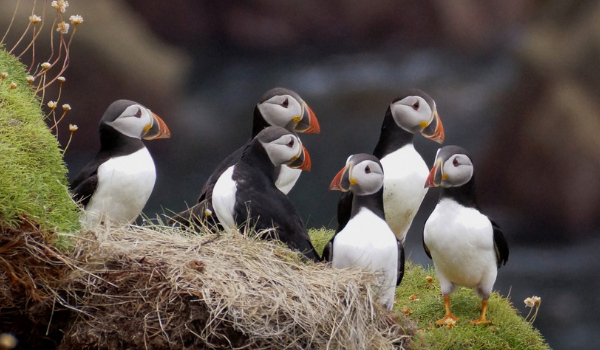An exciting new study led by the RSPB has revealed that the total number of seabirds on the island of Lundy has now tripled to over 21,000. Key species such as Manx shearwater have increased from just 297 pairs to more than 5,500 and puffins from 13 to 375 birds.
This growth over the past 15 years has been the result of the island being declared rat-free in 2006. The eradication of rats was necessary after evidence from other important seabird islands revealed that the biggest threat to burrow-nesting birds such as Manx shearwaters and puffins on Lundy was predation of eggs and chicks by rats.
In 2002, a partnership between Natural England, The Landmark Trust, the National Trust and the RSPB was formed to eradicate the rats on Lundy, which are not native to Britain but imported unwittingly on ships visiting the island or from shipwrecks.
Lundy Warden, Dean Jones said 'It is exciting to see this level of recovery in Manx shearwaters, one of our most important seabirds. In spring, the island comes alive at night with the sound of these amazing birds. The increase in puffins, guillemots and razorbills is also very encouraging for the future of seabirds on Lundy and we are maintaining our vigilance to ensure rats cannot return to the island.'

A juvenile Manx shearwater on Lundy. Photo by David Price.
Helen Booker, Senior Conservation Officer for the RSPB in South West England said: 'This study clearly shows how quickly and positively seabirds respond to the removal of non-native predators. Of course, we had anticipated major population increases when the project was launched, but the scale of this recovery has far exceeded our expectations'.
Rosie Hails, Director of Science and Nature at the National Trust said: 'We were really concerned as previous records showed that puffin numbers on Lundy had plummeted from over 3,500 pairs in 1939 to fewer than 10 pairs in 2000. And although around 75% of the global population of Manx shearwaters breed on UK islands, there were only 297 pairs on Lundy in 2001, way short of its potential considering its size and available habitat.'
 Puffins on Lundy. Photo by Elisabeth Price.
Puffins on Lundy. Photo by Elisabeth Price.
Tim Frayling, Senior Specialist in Ornithology at Natural England, said: 'Lundy Island is home to one of the most important seabird colonies in England and it is fantastic to see such a revival in numbers. The current challenges facing wildlife are huge, but this remarkable increase demonstrates that wildlife recovery can be achieved by partnerships and local communities working together. In this case by combining their expertise to create a safer breeding environment for the fantastic diversity of breeding seabirds that help make Lundy so special'.
Ms Booker added, 'The partners are grateful for all the support we’ve had over the years from a huge team of volunteers without which both the work to eradicate the rats and our knowledge of the seabirds’ recovery simply would not have been possible'.